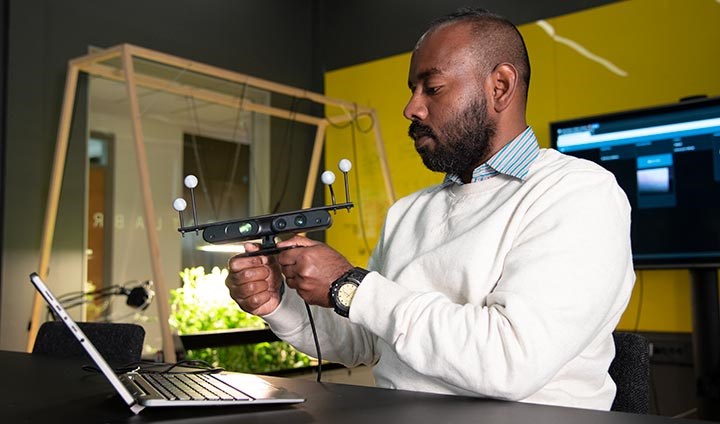Using AI to optimise taste and nutrition in plants

Ajay Arunachalam
Basil is being grown in a robotic cultivation testbed at Örebro University. Each plant is monitored by sensing technology, providing researchers with valuable big data. Data that can be then used together with artificial intelligence to determine how to cultivate produce with maximal taste and nutritional value.
“We can achieve significant improvements by using AI technology and combining it with knowledge in chemistry and sensory science,” says Ajay Arunachalam. He is one of the researchers involved in Örebro University’s interdisciplinary initiative, Food and health.
He is developing a system that learns to identify the different plants, extract their visual features and follow their growth pattern. In the process, it collects large volumes of complex biological data. Using artificial intelligence, information about the plants is inferred in real-time, and changes are made for the cultivation to yield an optimal harvest but also to identify the optimal environment for the plants to flourish.
“The idea is that we begin small-scale, then shift to large farms once we have the technology in place.”
Keeps track of light
In an attempt to understand the complex plant-environment interaction, the technology keeps track of light, water and temperature, adapting the conditions to the plant’s need. In addition to basil in the lab, Ajay Arunachalam is growing pak choi, a type of cabbage. In the next step, the plants will be analysed in a lab by chemistry researchers and taste-tested by the university’s own School of Hospitality, Culinary Arts and Meal Science.
“This means that we get information about the plant’s chemistry makeup that can be compared to its taste,” he says.

So far, artificial intelligence is learning to identify and track individual plants. Machine learning takes time, and it is also imperative that the AI can be explained and understood.
Not a black box solution
“It mustn’t only be a ‘black box’ solution, but be possible for people to interpret the information,”says Ajay Arunachalam.
“The future of agriculture is computerised, combining knowledge from botany, sensory science, life science, and nutritional science. This development will help shape sustainable growth that focuses on healthier and tastier produce while minimising process uncertainty.”
Text: Linda Harradine
Foto: Jesper Mattsson
Translation: Jerry Gray and Charlotta Hambre-Knight
